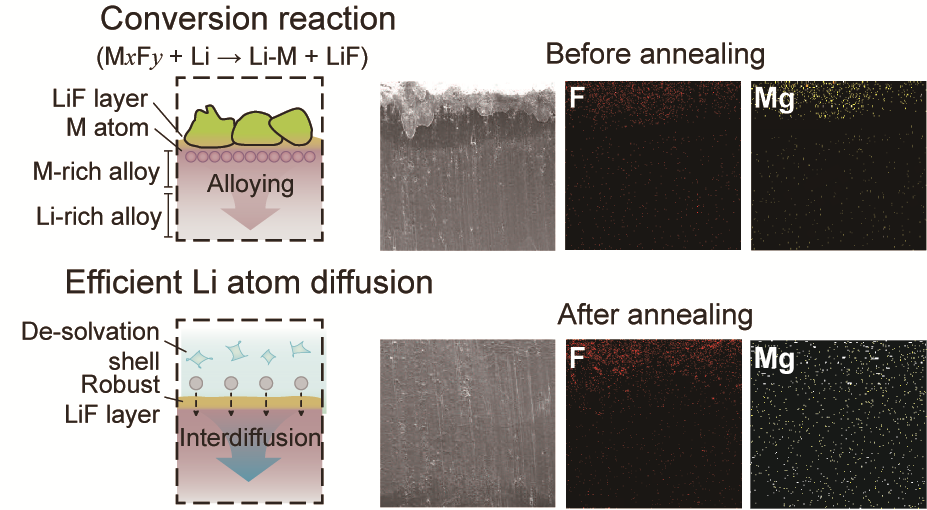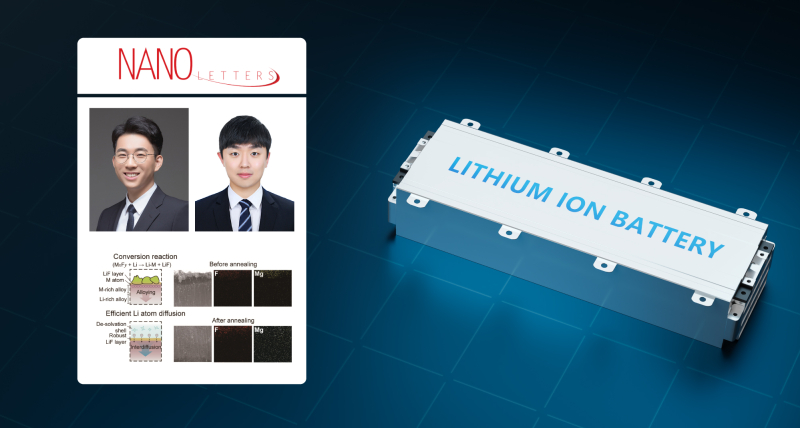A research team, led by Professor Hyun-Wook Lee in the School of Energy and Chemical Engineering at UNIST has recently carried out a study using metal fluoride material (MxFy) compounds. Their findings have been published in the April 2023 issue of Nano Letters.
In this study, the research team proposed a design strategy for interface engineering using a conversion-type reaction of metal fluorides to evolve a LiF passivation layer and Li-M alloy. In particular, they proposed a LiF-modified Li-Mg-C electrode, which demonstrates stable long-term cycling for over 2000 hr in common organic electrolytes with fluoroethylene carbonate (FEC) additives and over 700 hr even without additives, suppressing unwanted side reactions and Li dendritic growth. Furthermore, with the help of phase diagrams, the research team found that solid-solution-based alloying not only facilitates the spontaneous evolution of a LiF layer and bulk alloy but also enables reversible Li plating/stripping inward to the bulk, compared with intermetallic compounds with finite Li solubility.

Figure 1. Schematic image, demonstrating the reaction mechanism of MgF2 with Li into LiF and Li-Mg alloy.
This study has been supported by the 2023 Research Fund of UNIST and Individual Basic Science & Engineering Research Program and the Technology Development Program to Solve Climate Changes through the National Research Foundation (NRF) of Korea funded by the Ministry of Science and ICT (MSIT).
Journal Reference
Min-Ho Kim, Tae-Ung Wi, Jeongwoo Seo, et al., “Design Principles for Fluorinated Interphase Evolution via Conversion-Type Alloying Processes for Anticorrosive Lithium Metal Anodes,” Nano Lett., (2023).













